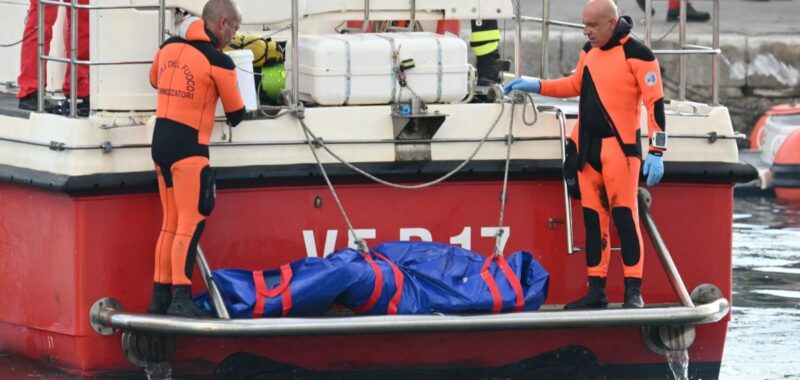
On Thursday, Italian authorities retrieved a fifth body from the Bayesian superyacht that sank in a storm earlier this week, killing British technology entrepreneur Mike Lynch.
The British-flagged, 184-foot vessel sank early Monday, and the five identified bodies thus far from the incident include Mike Lynch, founder of Autonomy and Darktrace; Morgan Stanley Bank International chairman Jonathan Bloomer and his wife, Judy; Chris Morvillo, a Clifford Chance lawyer; and his wife, Neda, were also found. Lynch’s 18-year-old daughter Hannah is still missing.
There are several theories as to why the massive, $39 million boat sank in just about 60 seconds. And the maker of the ship says the crew should’ve had time to rescue passengers.
Theory one — the mast was pushed over by the wind
The first theory is the mast on the massive vessel was so tall it tipped the boat over when a waterspout—essentially a water tornado—hit the boat. Giovanni Costantino, CEO of The Italian Sea Group, which owns several boat brands including the yacht’s builder, Perini Navi, told The Financial Times the boat was “designed to be absolutely stable” because it had the “world’s second-tallest mast.” But Karsten Borner, the skipper of a nearby boat, suggests the sinking actually could have been caused by high winds hitting the 236-foot mast. Even with sails stowed, the mast and its rigging would have provided a vast surface area for wind resistance.
The Bayesian “went flat [with the mast] on the water, and then went down,” Borner told Reuters. For reference, the tallest mast on a sailing boat on record was the Mirabella V at nearly 247 feet long, according to Guinness World Records.
Theory two — the retractable keel was in the wrong position
The second theory about the cause of the Bayesian sinking is that the keel was retracted when it should have been lowered, making the boat less stable. The keel is a structural beam that runs under the middle of the boat from bow to stern, giving the boat better stability, a lower center of gravity in the water, and more control while moving forward. “Without the keel, a boat might slip or skim on the water,” according to boat manufacturer Sea Born.
The Bayesian had a keel that could be retracted, according to the yacht’s manufacturer, Perini Navi. It could be lifted to reduce the draught of the boat, making it easier to enter shallow harbors. It’s possible that if the keel had been in the raised position rather than extended, that could’ve compromised the boat’s stability in a strong wind, causing it to sink.
Theory three — a major hatch was left open to the waves
Perhaps the strongest theory so far is the notion that someone on board may have left a major hatch or door ajar, causing the boat to quickly fill with water. In fact, Costantino thinks this is the strongest theory after watching back footage of the sinking. In fact, the rear of the boat appears to have a hinged door that folds down into a sea-level deck.
Since it was obvious the Bayesian was taking on water, there should have been time to get everyone off the boat and into rafts, Costantino told the FT.
“Jesus Christ! The hull is intact. The water came in from [hatchways] left open,” he said. “There is no other possible explanation. If manoeuvred properly, the boat would have comfortably handled the weather—comfortably,” he said.

